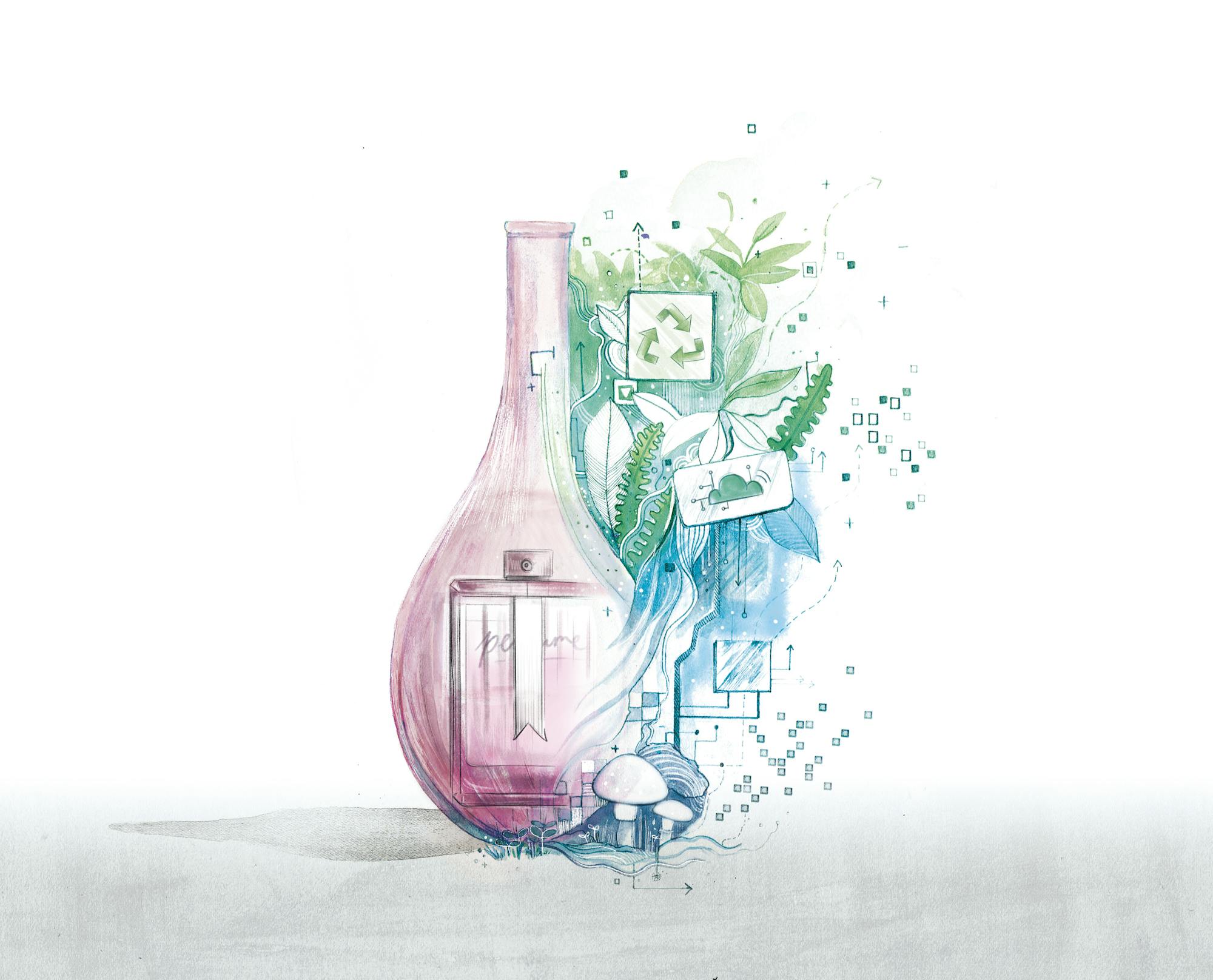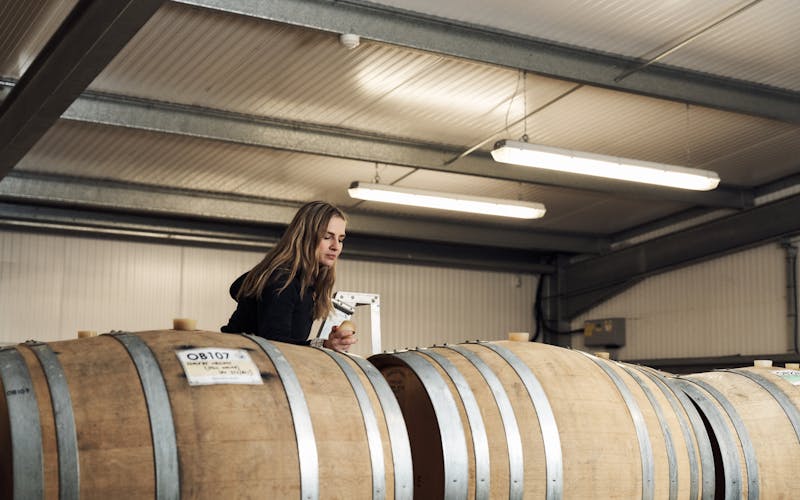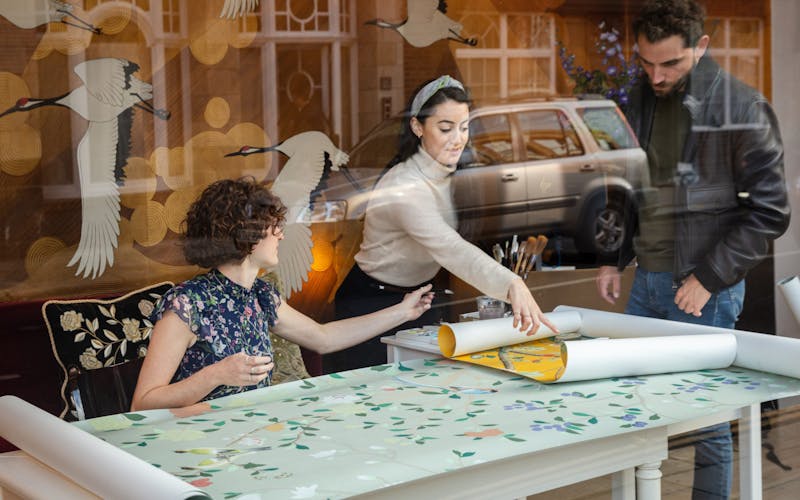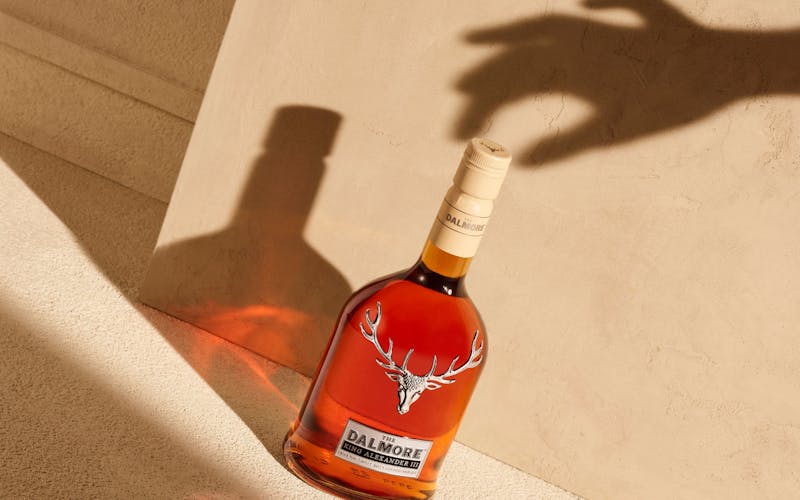

for Walpole members and
non-members available now
at The Londoner




Boxes that vanish, electrics that turn cases into power sources for iPads and shape changing materials are just some of the ways packaging is predicted to reinvent itself as soon as the next decade.
Moulded fibre innovator COLOURFORM, is already making waves in the packaging industry by offering luxury brands an alternative to plastic that is renewable, recyclable and biodegradable, and available in any customised shape, colour and texture. So, where can brands go from here?
According to futurologist Dr Ian Pearson, who has teamed up with COLOURFORM to explore how future influences will overhaul the role of packaging, we are set to see innovative upcycling, waste-free materials grown from fungi, integrated computer displays and the use of augmented reality come into play.
Hannah March, COLOURFORM business development manager, comments: “There’s a new dawn of opportunity afoot; packaging is no longer ‘just a box’ and change is coming thick and fast. The challenge for brands now is to deliver against future thinking in order to meet consumer expectation.
“Our goal is to always be an early responder. COLOURFORM exists as a direct response to the needs of the market – it reconciles the need for sustainable packaging with the desire for premium and bespoke aesthetics. To meet our ambition of always offering solutions first, we need to continue to innovate.
“This is why we’ve partnered with futurologist Dr Ian Pearson, who has shared his predictions for the not so distant future, based on the trajectory of technological and other advancements.”
Top developments for taking packaging beyond the box include:
Blurring the line between product and packaging:
New packaging materials will elevate the status of ‘the box’, removing the boundary between the product and the packaging in a way that makes them both fundamental to functionality and brand equity. For example, a new smartphone could come packaged in its charging device, or portable keyboard.
Thinking outside the parameters of the materials we are familiar with will also expand the thinking of designers, and in turn heighten the expectations that consumers have. For example, shape-memory alloys, reusable plastics and polymers will act as packaging, before being reconfigured to a shape for another purpose, for example a stand or charger.
As an example, electro-active polymers are developing at pace presently. This material, while proving to be too brittle now, could have the capability to change shape on demand in the future – whether it be via touch or voice.
Soluble, biodegradable and compostable matter:
It’s already possible to grow packaging. Recent developments using fungi have resulted in mixes that can make any shape from a mass of fungus filaments which, after use, quickly biodegrade. Other fantastic innovations include the likes of Skipping Rocks Lab’s edible and biodegradable seaweed packaging.
Novel materials such as this may soon replace common plastics and help brands strengthen their environmentally-friendly credentials which the ever discerning consumer expects . Going further, organic packaging which contain nutrients and seeds could sprout fauna and herbs overtime to become a kitchen-staple.
Hannah comments, “Innovations like these will force consumers to consider a product’s full lifecycle, and place more ownership on purchasing responsibly. However, when it comes to the luxury sector in particular, design and experience are also paramount. This is the challenge we took on with COLOURFORM.
“We can take a used coffee cup, or use virgin fibre from renewable sources, and transform it into beautiful packaging that really challenges plastic. With this innovation brands have the capability to marry the need for responsible packaging with the desire for a premium experience. But we can’t stop there – we need to continue innovating to ensure we reconcile the tension between ethical packaging and beautiful design in the most relevant way.”
Augmented reality:
It’s a matter of time before augmented reality (AR) becomes everyday tech, but beyond retailers being able to show shoppers how outfits look, and enabling packs to carry information elsewhere, AR presents an important after-sale opportunity. It can show the consumer the ‘what’s next’; how to experience the product to its full potential, whether it be a walk through the product’s journey when it’s disposed of properly, or to highlight its second-use options and capabilities.
Second life:
In today’s world, creating a second life for packaging is an opportunity that lends itself to particular market sectors. For example, many luxury brands already offer packaging that is intended to be retained, but, in the future we can expect this to be a prerequisite of any brief, across all industries.
Examples include a perfume bottle, or its packaging, being upcycled and given a second life as an ornament, vessel to hold brushes or refilled. However, we can also expect to see other sectors, such as fashion and the drinks industry, adapt to break the single-use life cycle; garments will be designed for easy dismantle and second use, with trousers becoming shorts, or packaging for a new dress transforming into an accessory.
Hannah says: “The imagination plays a huge role here, but so does the brief to the designer. Regulations to reduce or ban single-use-plastic entirely will generate more ‘circular design’ briefs, and in turn produce a strong contingent of consumers who will purchase solely on a ‘second life’ premise. “
Of the predictions Hannah concludes: “What’s clear is that standing still isn’t an option if brands are to remain at the very cutting edge of consumer desire.
“As innovators in the packaging industry, we need to meet the consumer on all fronts – advance materials, design, aesthetics, experience, sustainability and technology – and while serious strides have been made already, the future is coming and change is a given. Whether it’s packaging that vanishes, easily enters the circular economy or has longevity through upcycling, brands need to be prepared and embrace new technologies, materials and sustainable design as more choice becomes available.”
www.jamescropper.com





